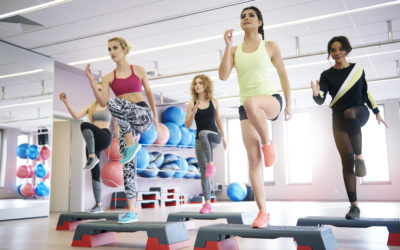Balance and Fall Prevention
Exercise Balance to Prevent Falls
Just as a reduction in resistance training can make us weaker and fewer miles on the treadmill can reduce our cardiovascular fitness levels, maintaining good balance as you age requires a continued effort, says physical therapist Nancy Causton, PT, of Impact Physical Therapy of Hillsboro.
“Generally speaking, a person’s risk of falling increases when they get older, but there are ways to vastly reduce this risk,” Causton said. “A reduction in balance is often a symptom of something else – an issue like muscle weakness, joint stiffness, or perhaps even a medical condition that can and should be addressed.”
As you age, however, good balance becomes critical in the prevention of falls. According to the Centers for Disease Control and Prevention (CDC), more than one-third of U.S. adults 65 years and older fall each year, with up to 30 percent suffering moderate to severe injuries.
Such statistics, Causton points out, reinforce the need for regular exercise and balance assessments as you age.
“A comprehensive exam by a physical therapist, one that includes a balance assessment, can effectively pinpoint what may be contributing to your lack of balance which, if left unaddressed, can directly contribute to your risk of falling and even a lack of mobility,” Causton said. “We can use these results to establish an individualized muscle strengthening and balance training program to reduce your risk of falls.”
Without such a specific program, a person can still make strides toward maintaining good balance, Causton says. Exercise as simple as walking, she said, can offer great benefits, but specific balance-enhancing exercises exist that are slightly more challenging, depending on your level of strength and balance. Such “try at home” exercises include:
Weight Shifts: While in a standing position with your legs should-width apart, simply shift your weight to one leg, lifting the opposite foot from the floor, and hold for 30 seconds. Then, shift your weight to the other side and lift the other leg for 10 seconds. Increase time to 30 seconds as your balance improves.
Single-Leg Balance: Still in your standing position, legs shoulder-width apart and hands on your hips, lift one leg from the floor and bend back at the knee, holding your toe about a foot off the ground. Hold for 10 seconds, then repeat with the other leg. Increase to 30 seconds as your balance improves.
Heel to Toe Walk: Put the heel of one foot in front of the toes of the other so they’re touching. With your eyes focused on a spot ahead, take a step, putting the heel of the stepping foot in front of the toes of the other. Repeat for 20 steps.
According to Causton, these exercises (and others like them) should be performed near a wall or something sturdy in case you become unsteady. And of course, before beginning any at-home exercises, consult movement experts like those on the Impact Physical Therapy of Hillsboro team to schedule a balance assessment to ensure these types of exercises are right for you and your specific condition.
Whether your goal is to get good balance to help future prevention of falls , our clinical team is ready to help. Simply call (503) 615-5969 to schedule an appointment with an Impact physical therapist. Impact participates with most insurance companies and you do not need a prescription or referral to begin treatment.
Make an appointment
Impact Physical Therapy of Hillsboro
4950 NE Belknap Court
Suite 107
Hillsboro, OR 97124
(503) 615-5969
- - -
Impact Physical Therapy of Banks
13590 NW Main St
Banks, OR, 97106
(971) 713-3960
Finding Your Single Leg Balance
Balance is an essential part of movement regardless of your age or health status. At young ages, gymnasts must master how to stay on a balance beam with no room for error. Likewise, the elderly must safely navigate the uneven ground of the garden to tend to their...
Meet our team
 Impact Physical Therapy of Hillsboro is a team of experienced, skilled Physical Therapists who genuinely care about helping each patient return to the highest possible level of function.
Impact Physical Therapy of Hillsboro is a team of experienced, skilled Physical Therapists who genuinely care about helping each patient return to the highest possible level of function.

